JS 逆向百例层层嵌套!某加速商城 RSA 加密
Posted K哥爬虫
tags:
篇首语:本文由小常识网(cha138.com)小编为大家整理,主要介绍了JS 逆向百例层层嵌套!某加速商城 RSA 加密相关的知识,希望对你有一定的参考价值。

声明
本文章中所有内容仅供学习交流,敏感网址、数据接口均已做脱敏处理,严禁用于商业用途和非法用途,否则由此产生的一切后果均与作者无关,若有侵权,请联系我立即删除!
逆向目标
-
目标:某加速商城登录接口
-
主页:aHR0cDovL3d3dy4xNXl1bm1hbGwuY29tL3BjL2xvZ2luL2luZGV4
-
接口:aHR0cDovL3d3dy4xNXl1bm1hbGwuY29tL3BjL2xvZ2luL2NoZWNr
-
逆向参数:
Cookie:phpSESSID=g9jp7sfpukg99v03gj69nr9r56Form Data:
u[password]: 7aad70a547b016a07f2e20bee7b4936111e650aa5c419fafdfb28322...... _csrfToken: 4bea63330c5ccdd37588321d027f4c40129687b0
逆向过程
抓包分析
在首页点击登陆,来到登录页面,随便输入一个账号密码登陆,抓包定位到登录接口为 aHR0cDovL3d3dy4xNXl1bm1hbGwuY29tL3BjL2xvZ2luL2NoZWNr ,POST 请求,Form Data 里,密码 u[password] 被加密处理了,此外还有一个 _csrfToken 也是需要我们解决的,cookie 里面有一个 PHPSESSID,经过测试,如果不带此参数,最终的请求也是失败的。
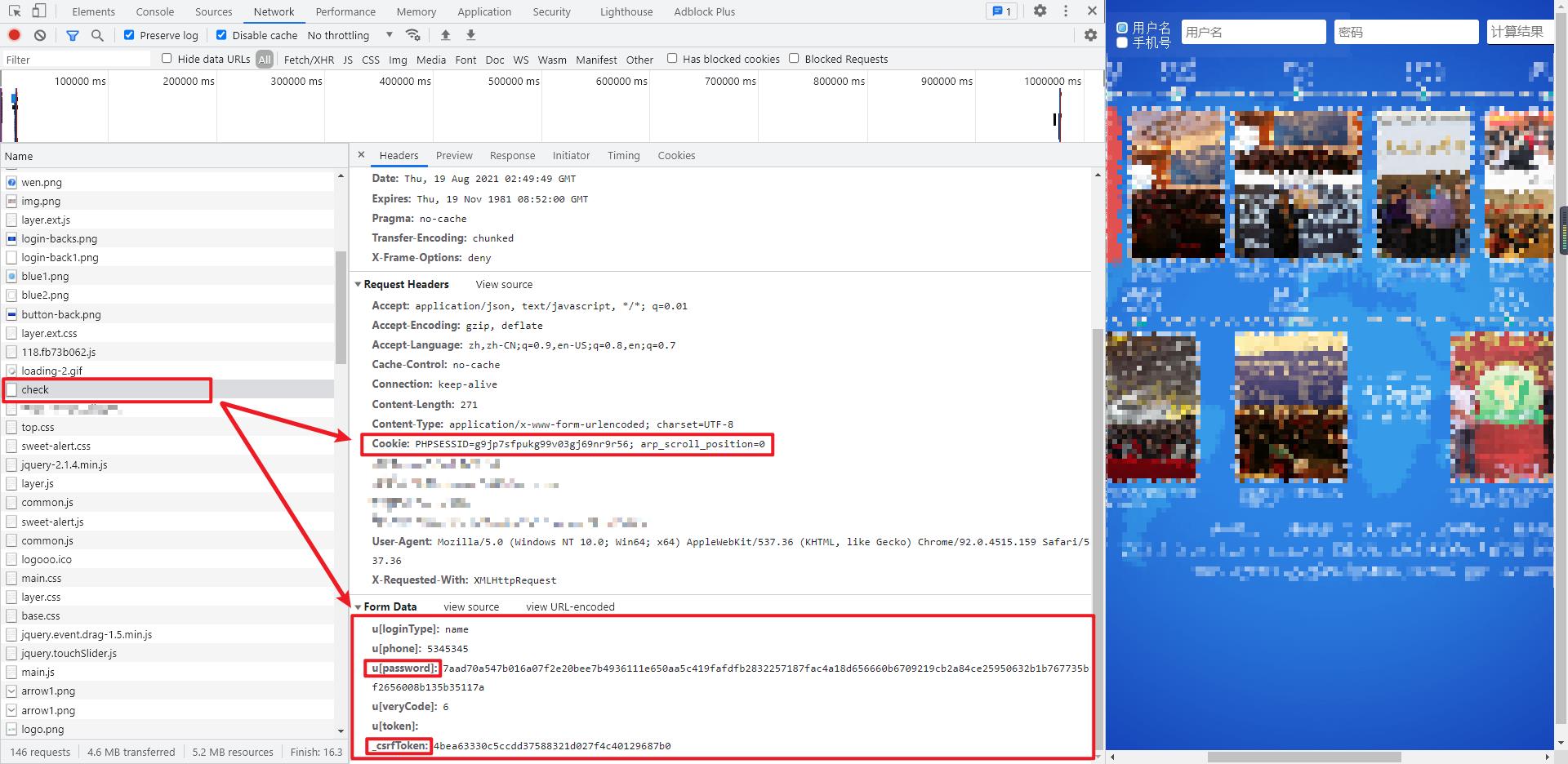
参数逆向
首先看看 _csrfToken,先尝试直接搜索一下它的值,可以发现其实在首页的源码里面就有,直接匹配拿过来即可:

再看一下 cookie 里面的 PHPSESSID,首先想到的,可能是第一次访问页面,Response Headers 返回的 Set-Cookie 得到的,查看第一次请求,确实是的,如果没有的话,需要清除缓存再访问(开发者工具 ——> Application ——> Storage ——> Clear site data)。
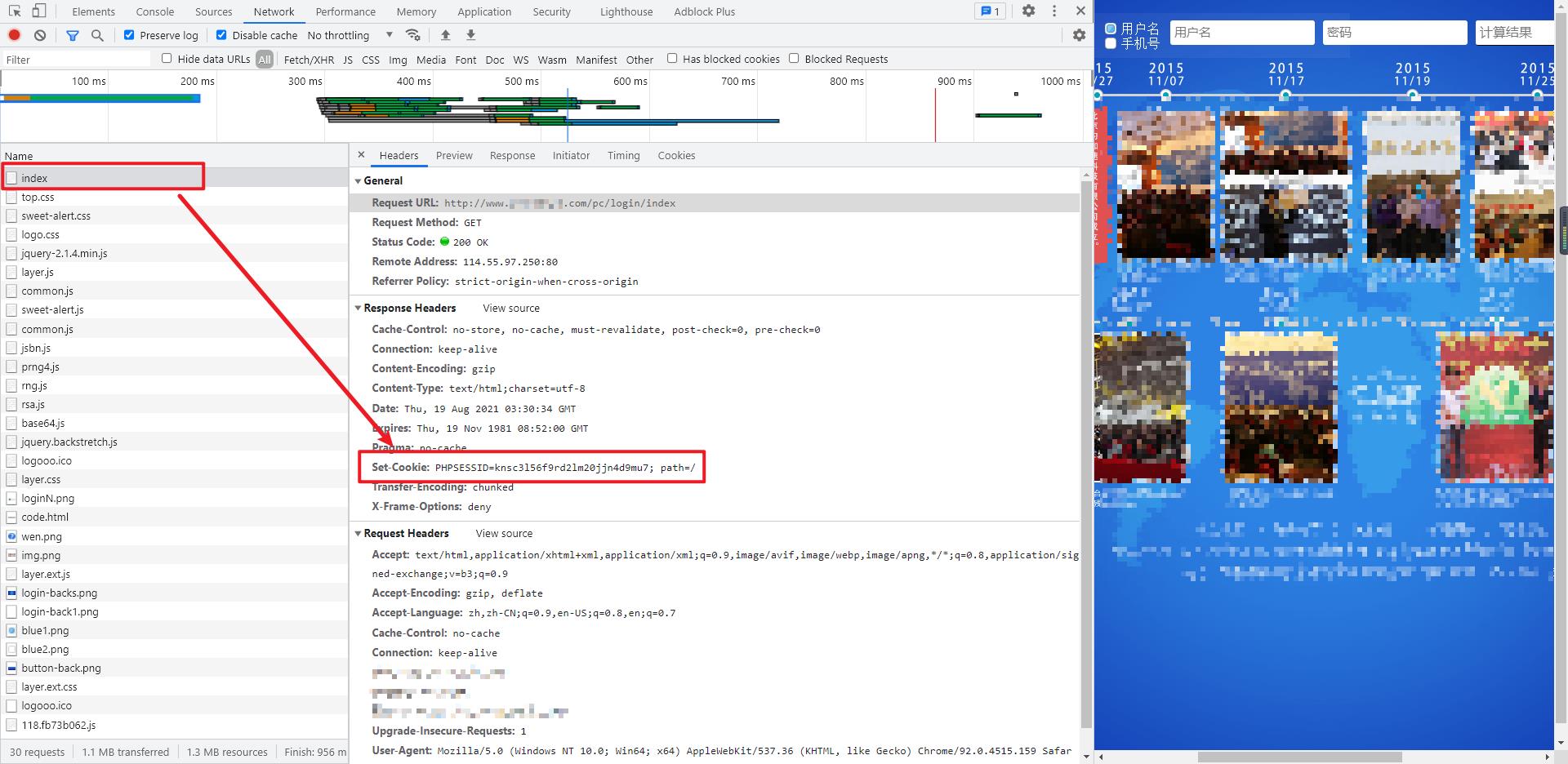
最后一个密码参数 u[password],肯定是通过 JS 加密得到的,直接 Ctrl+Shift+F 全局搜索,可以直接在 index 首页找到 RSA 加密的地方,埋下断点进行调试,最后的 res 正是加密后的密码:
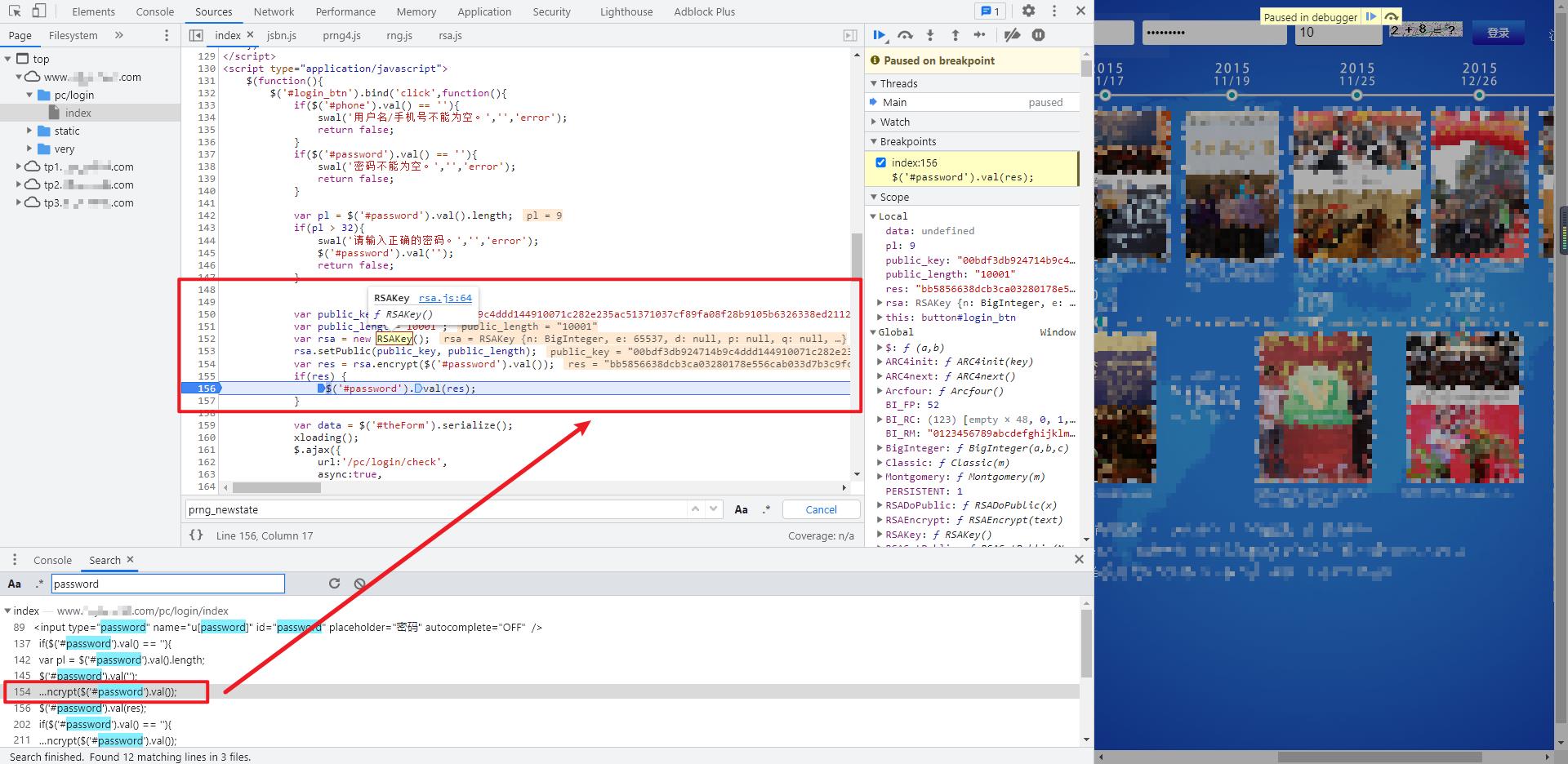
我们将这段关键代码进行改写,封装成一个函数:
function getEncryptedPassword(password) {
var public_key = "00bdf3db924714b9c4ddd144910071c282e235ac51371037cf89fa08f28b9105b6326338ed211280154c645bf81bae4184c2b52e2b02b0953e7aa8b25a8e212a0b";
var public_length = "10001";
var rsa = new RSAKey();
rsa.setPublic(public_key, public_length);
return rsa.encrypt(password);
}
这里主要用到的三个函数 RSAKey()、setPublic()、encrypt(),在开发者工具中,鼠标放到函数上,可以看到这里都是调用的 rsa.js 里面的方法,我们直接将整个文件剥离下来进行本地调试:

本地调试会发现提示 BigInteger 未定义,鼠标移到这个函数上面,可以发现是调用了 jsbn.js 里面的方法,同样的,直接将整个 jsbn.js 文件剥离下来进行本地调试。
这里其实在 rsa.js 文件的第一行有一句注释:// Depends on jsbn.js and rng.js,我们可以猜测 rsa.js 是可能依赖 jsbn.js 和 rng.js 这两个文件的。
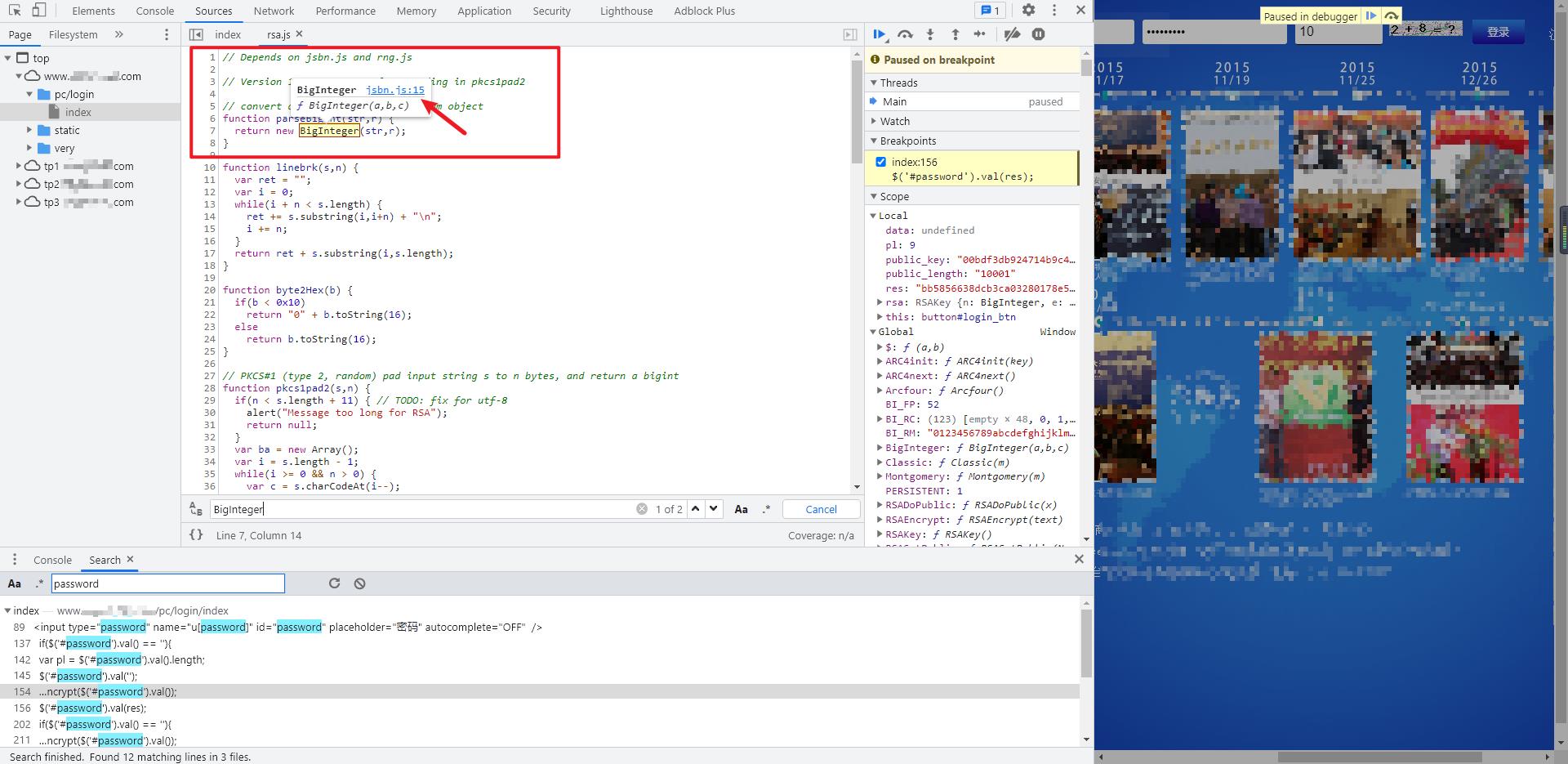

有了 jsbn.js 的代码,再次进行调试,会发现又提示 navigator 和 SecureRandom 未定义,navigator 我们已经非常熟悉了,是浏览器的相关信息,一般情况下直接定义为空即可(navigator = {};);将鼠标移到 SecureRandom 函数上面,可以发现是调用了 rng.js 里面的方法,同样的,直接将整个 rng.js 文件剥离下来进行本地调试。这里就证实了前面我们的猜想,rsa.js 确实是依赖 jsbn.js 和 rng.js 的。
我们注意到,这里在 rng.js 文件的第一行,同样有一句注释:// Random number generator - requires a PRNG backend, e.g. prng4.js,表明 rng.js 是随机数生成器,需要 PRNG 后端,例如 prng4.js,在密码学中,PRNG 全称是 pseudorandom number generator,即伪随机数生成器,是指通过特定算法生成一系列的数字,使得这一系列的数字看起来是随机的,但是实际是确定的,所以叫伪随机数,感兴趣的朋友可以深入研究一下,在这里我们知道 rng.js 可能还依赖于 prng4.js,需要进一步调试才清楚。
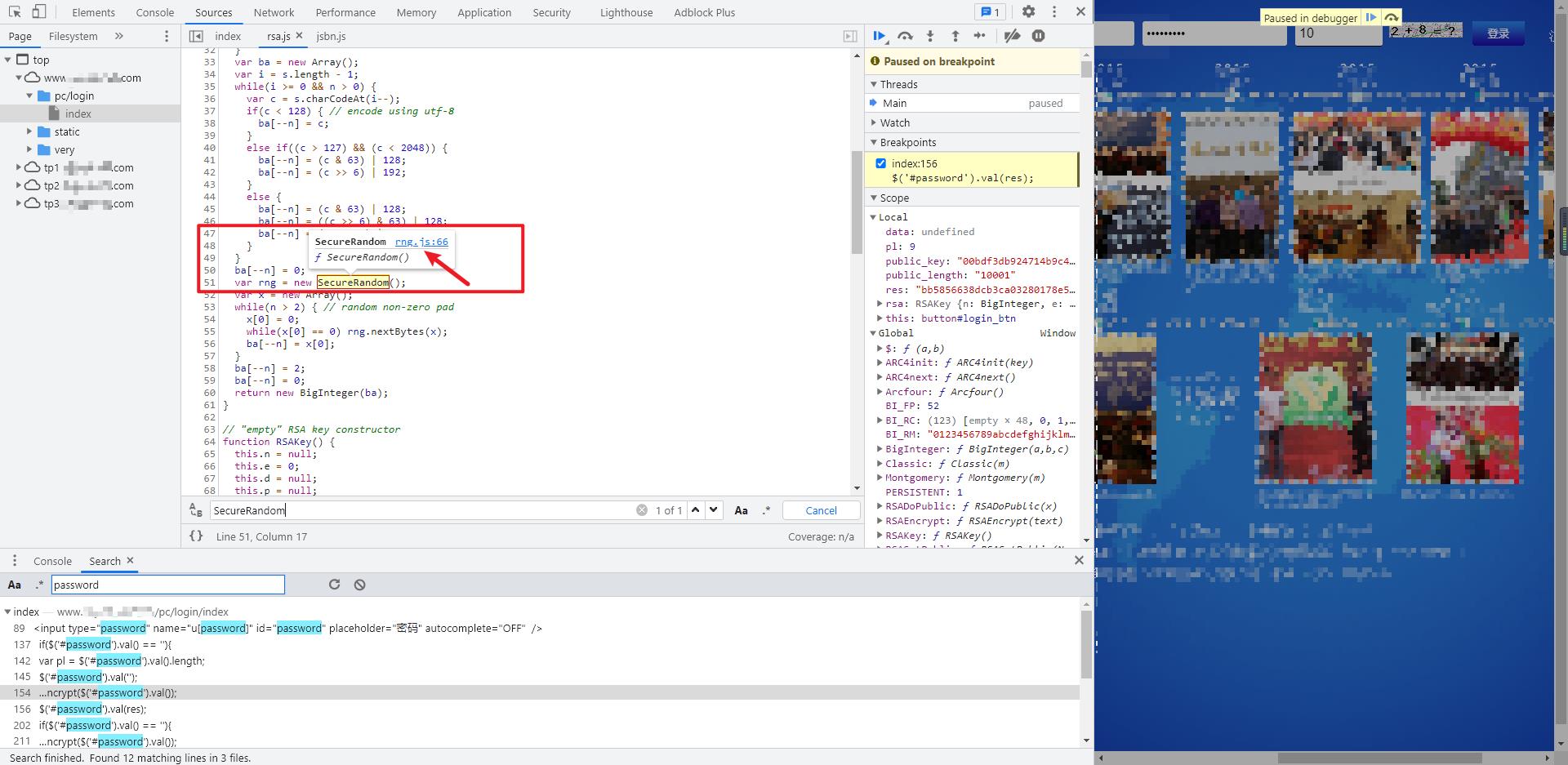
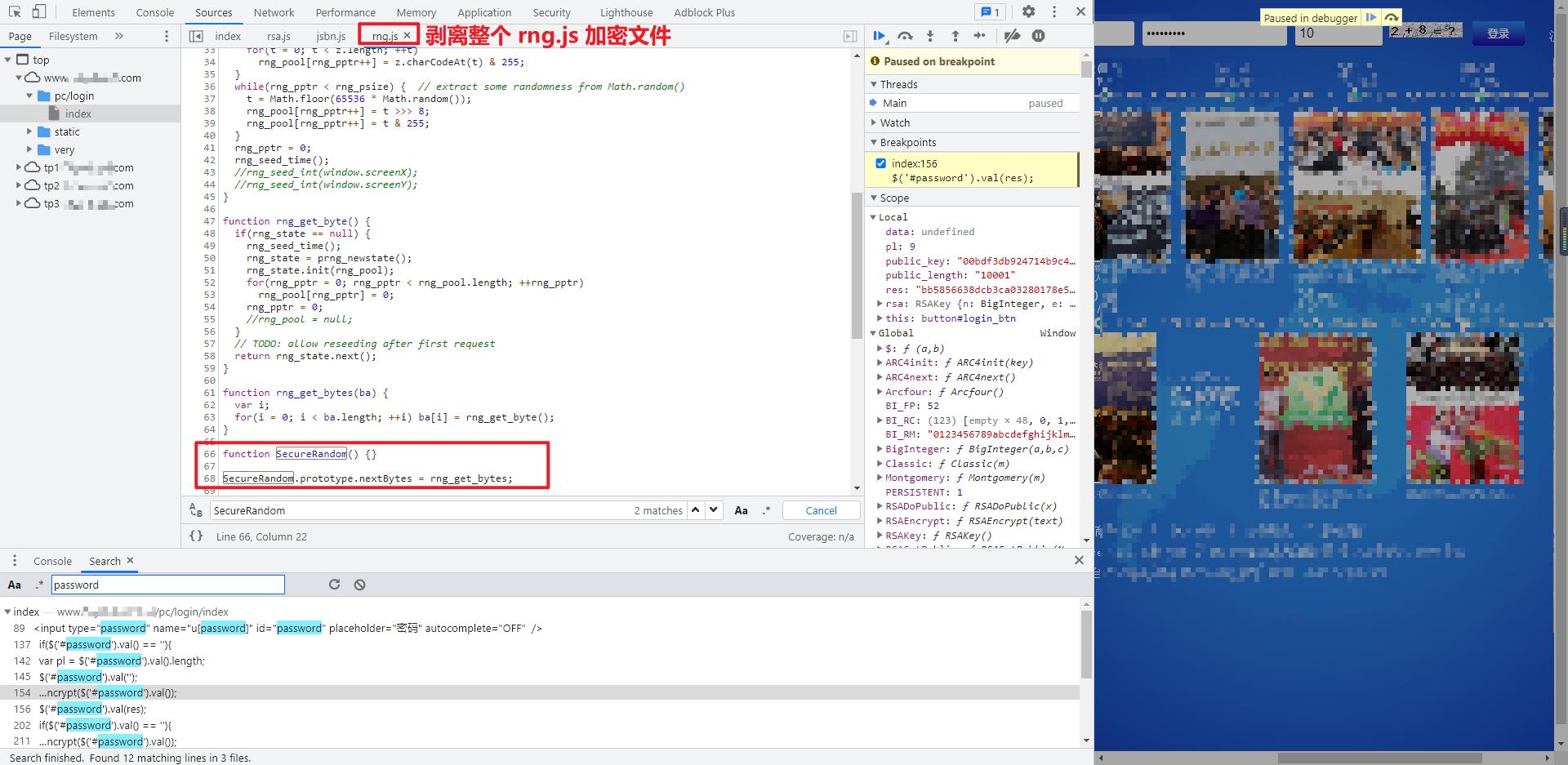
rsa.js、jsbn.js、rng.js 都齐全了,再次本地调试,会发现 rng.js 里面的 rng_psize 未定义,鼠标放上去看到 rng_psize 就是一个定值 256,在右边的 Global 全局变量里也可以看到值为 256,尝试搜索一下 rng_psize,可以发现在 prng4.js 里面有定义 var rng_psize = 256;,果然和注释说得一样,rng.js 是依赖 prng4.js 的,但是这里似乎直接定义一下 rng_psize 就行了。
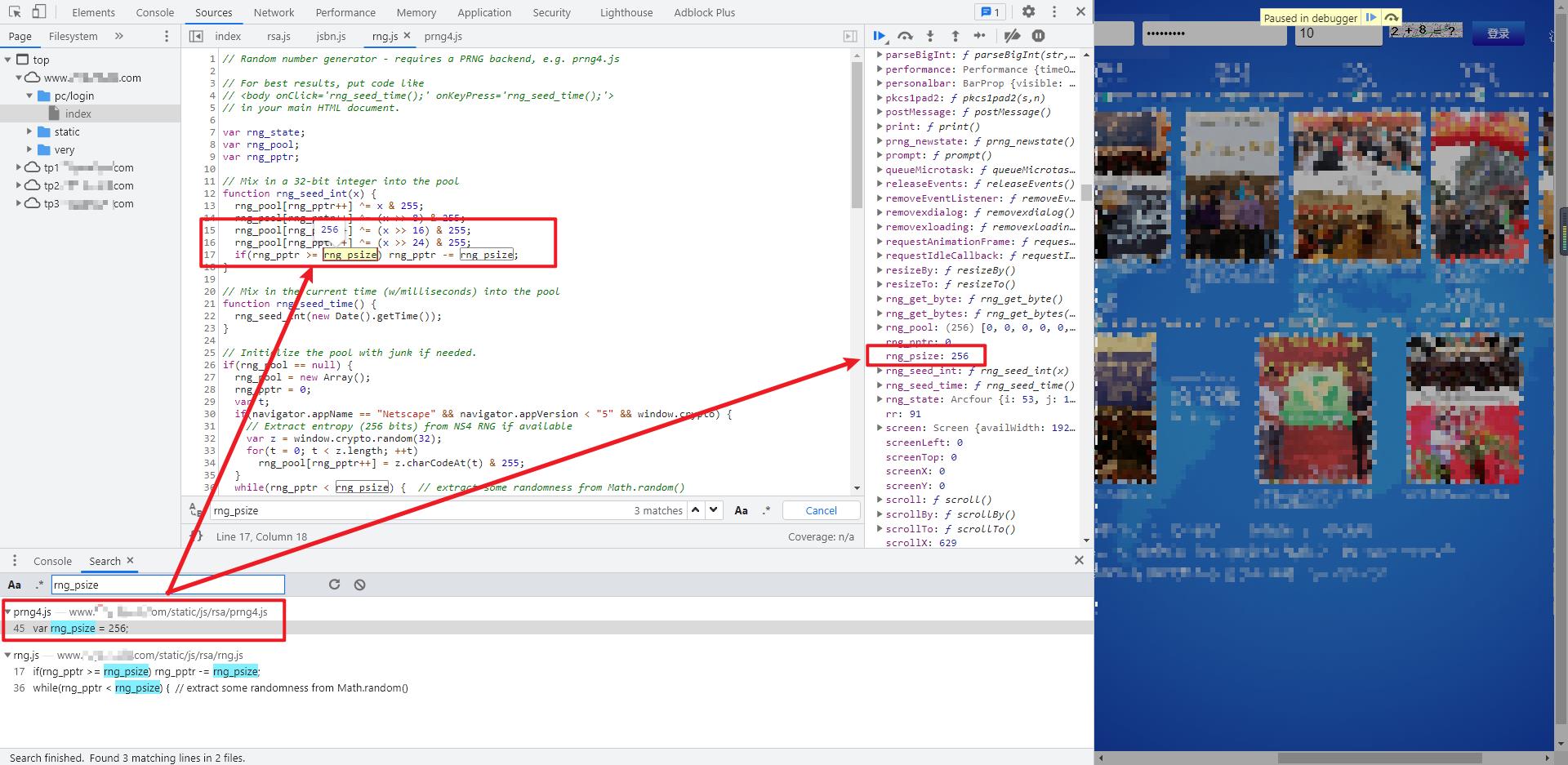
直接在本地代码定义一下 var rng_psize = 256;,再次进行调试,此时又会提示 rng.js 里缺少 prng_newstate() 对象,再次回到开发者工具,可以看到 prng_newstate() 是 prng4.js 里面的方法,果然 rng.js 和 prng4.js 的关系并不简单,同样的,我们也直接将整个 prng4.js 文件剥离下来进行本地调试。

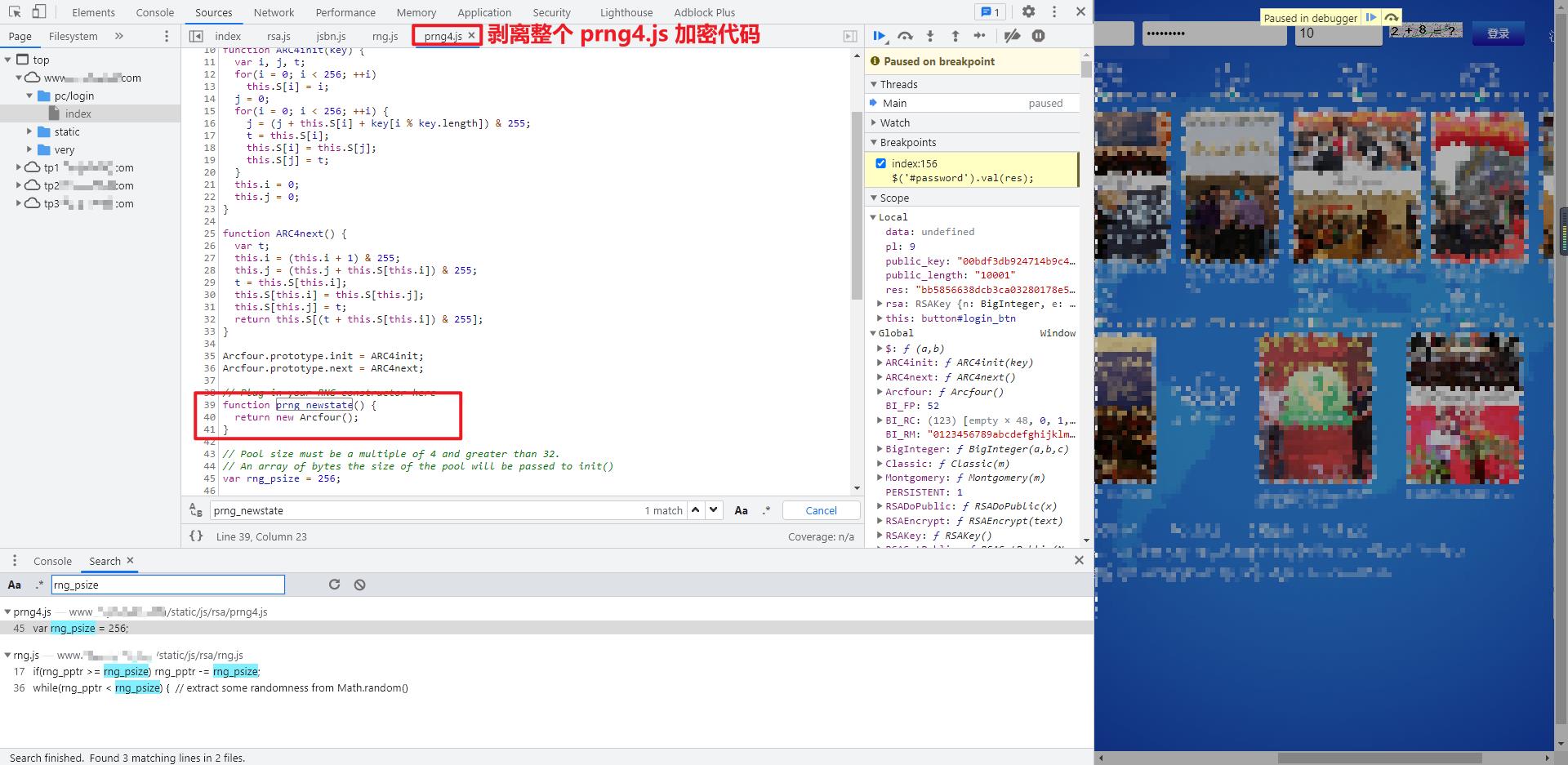
再次调试,运行无误,可以成功拿到加密后的密码了:
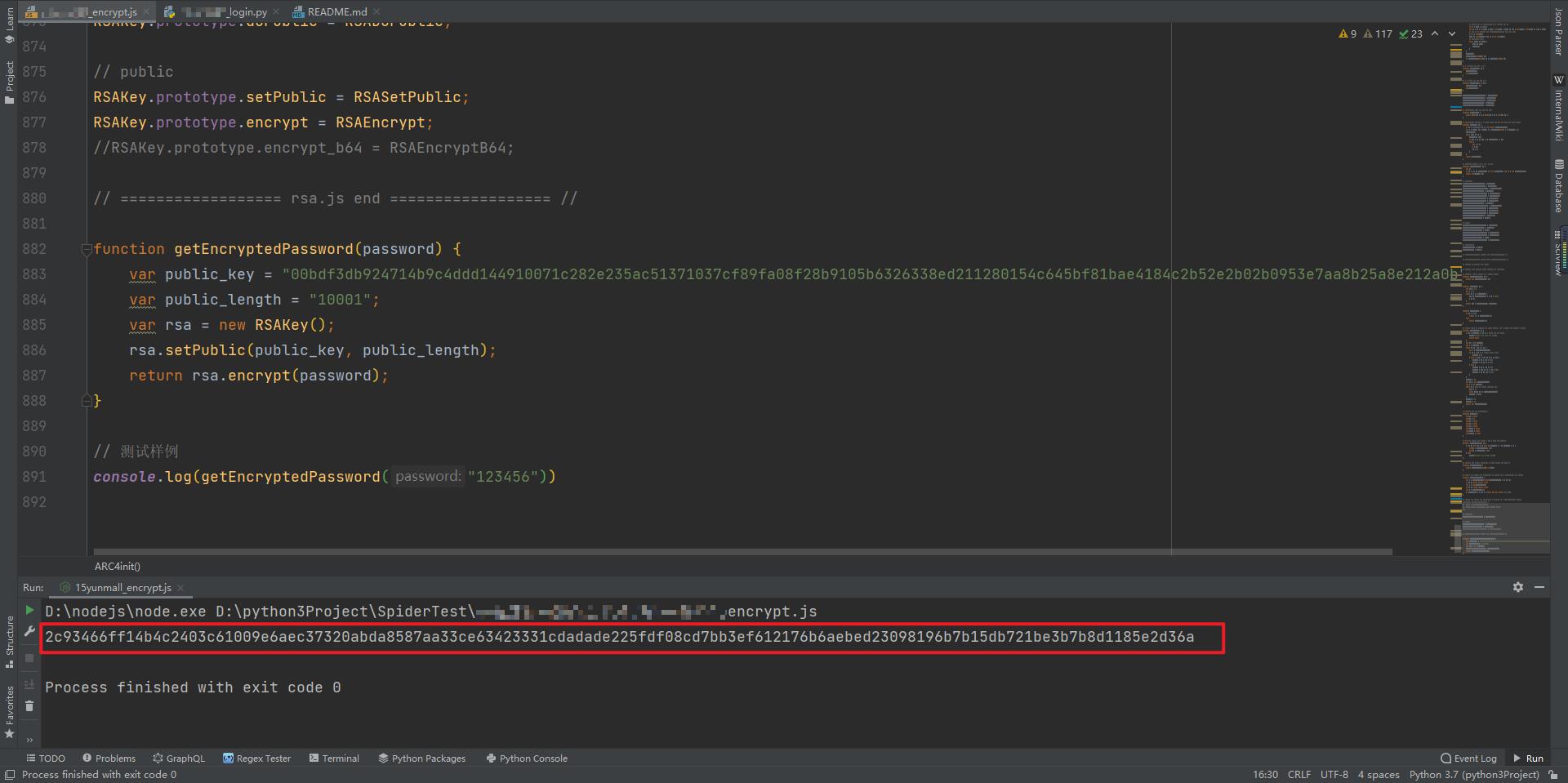
逻辑总结
-
加密入口可以在 index 首页找到,用到了 rsa.js 里面的三个加密函数
RSAKey()、setPublic()、encrypt(); -
rsa.js 里的
BigInteger()函数依赖 jsbn.js,SecureRandom()函数依赖 rng.js; -
rng.js 里的变量
rng_psize在 prng4.js 中定义,prng_newstate()函数也依赖 prng4.js;
要将 rsa.js、jsbn.js、rng.js、prng4.js 这四个 JS 加密文件完整的剥离下来才能还原整个加密过程。
完整代码
GitHub 关注 K 哥爬虫:https://github.com/kuaidaili,持续分享爬虫相关代码!欢迎 star !
以下只演示部分关键代码,完整代码仓库地址:https://github.com/kuaidaili/crawler/
参数 JS 加密关键代码
navigator = {};
// ================== prng4.js begin ================== //
function Arcfour() {}
function ARC4init(key) {}
function ARC4next() {}
// 此处省略 N 个函数
var rng_psize = 256;
// ================== prng4.js end ================== //
// ================== rng.js begin ================== //
var rng_state;
var rng_pool;
var rng_pptr;
function rng_seed_int(x) {}
function rng_seed_time() {}
// 此处省略 N 个函数
function SecureRandom() {}
SecureRandom.prototype.nextBytes = rng_get_bytes;
// ================== rng.js end ================== //
// ================== jsbn.js begin ================== //
var dbits;
var canary = 0xdeadbeefcafe;
var j_lm = ((canary & 0xffffff) == 0xefcafe);
function BigInteger(a, b, c) {}
function nbi() {}
// 此处省略 N 个函数
// protected
BigInteger.prototype.copyTo = bnpCopyTo;
BigInteger.prototype.fromInt = bnpFromInt;
BigInteger.prototype.fromString = bnpFromString;
BigInteger.prototype.clamp = bnpClamp;
BigInteger.prototype.dlShiftTo = bnpDLShiftTo;
BigInteger.prototype.drShiftTo = bnpDRShiftTo;
BigInteger.prototype.lShiftTo = bnpLShiftTo;
BigInteger.prototype.rShiftTo = bnpRShiftTo;
BigInteger.prototype.subTo = bnpSubTo;
BigInteger.prototype.multiplyTo = bnpMultiplyTo;
BigInteger.prototype.squareTo = bnpSquareTo;
BigInteger.prototype.divRemTo = bnpDivRemTo;
BigInteger.prototype.invDigit = bnpInvDigit;
BigInteger.prototype.isEven = bnpIsEven;
BigInteger.prototype.exp = bnpExp;
// public
BigInteger.prototype.toString = bnToString;
BigInteger.prototype.negate = bnNegate;
BigInteger.prototype.abs = bnAbs;
BigInteger.prototype.compareTo = bnCompareTo;
BigInteger.prototype.bitLength = bnBitLength;
BigInteger.prototype.mod = bnMod;
BigInteger.prototype.modPowInt = bnModPowInt;
// "constants"
BigInteger.ZERO = nbv(0);
BigInteger.ONE = nbv(1);
// ================== jsbn.js end ================== //
// ================== rsa.js begin ================== //
function parseBigInt(str, r) {}
function linebrk(s, n) {}
function byte2Hex(b) {}
function pkcs1pad2(s, n) {}
function RSAKey() {}
function RSASetPublic(N, E) {}
function RSADoPublic(x) {}
function RSAEncrypt(text) {}
// protected
RSAKey.prototype.doPublic = RSADoPublic;
// public
RSAKey.prototype.setPublic = RSASetPublic;
RSAKey.prototype.encrypt = RSAEncrypt;
//RSAKey.prototype.encrypt_b64 = RSAEncryptB64;
// ================== rsa.js end ================== //
function getEncryptedPassword(password) {
var public_key = "00bdf3db924714b9c4ddd144910071c282e235ac51371037cf89fa08f28b9105b6326338ed211280154c645bf81bae4184c2b52e2b02b0953e7aa8b25a8e212a0b";
var public_length = "10001";
var rsa = new RSAKey();
rsa.setPublic(public_key, public_length);
return rsa.encrypt(password);
}
// 测试样例
console.log(getEncryptedPassword("123456"))
Python 登录关键代码
#!/usr/bin/env python3
# -*- coding: utf-8 -*-
import execjs
import requests
from lxml import etree
from PIL import Image
index_url = \'脱敏处理,完整代码关注 GitHub:https://github.com/kuaidaili/crawler/\'
login_url = \'脱敏处理,完整代码关注 GitHub:https://github.com/kuaidaili/crawler/\'
code_url = \'脱敏处理,完整代码关注 GitHub:https://github.com/kuaidaili/crawler/\'
headers = {
\'Host\': \'脱敏处理,完整代码关注 GitHub:https://github.com/kuaidaili/crawler/\',
\'Referer\': \'脱敏处理,完整代码关注 GitHub:https://github.com/kuaidaili/crawler/\',
\'Origin\': \'脱敏处理,完整代码关注 GitHub:https://github.com/kuaidaili/crawler/\',
\'User-Agent\': \'Mozilla/5.0 (Windows NT 10.0; Win64; x64) AppleWebKit/537.36 (Khtml, like Gecko) Chrome/91.0.4472.114 Safari/537.36\'
}
session = requests.session()
def get_encrypted_password(password):
with open(\'encrypt.js\', \'r\', encoding=\'utf-8\') as f:
yunmall_js = f.read()
encrypted_password = execjs.compile(yunmall_js).call(\'getEncryptedPassword\', password)
return encrypted_password
def get_csrf_token_cookie():
response = session.get(url=index_url, headers=headers)
tree = etree.HTML(response.text)
csrf_token = tree.xpath("//input[@name=\'_csrfToken\']/@value")[0]
cookies = response.cookies.get_dict()
# print(csrf_token, cookies)
return csrf_token, cookies
def get_very_code(cookies):
response = session.get(url=code_url, cookies=cookies, headers=headers)
with open(\'code.png\', \'wb\') as f:
f.write(response.content)
image = Image.open(\'code.png\')
image.show()
very_code = input(\'请输入验证码: \')
return very_code
def login(csrf_token, very_code, cookies, username, encrypted_password):
data = {
\'u[loginType]\': \'name\',
\'u[phone]\': username,
\'u[password]\': encrypted_password,
\'u[veryCode]\': very_code,
\'u[token]\': \'\',
\'_csrfToken\': csrf_token
}
header_info = {
\'X-Requested-With\': \'XMLHttpRequest\',
}
headers.update(header_info)
response = session.post(url=login_url, data=data, cookies=cookies, headers=headers)
response.encoding = \'utf-8-sig\'
response_code = response.text
# print(response_code)
status_code = {
\'31\': \'恭喜,登陆成功。\',
\'32\': \'登陆失败。\',
\'33\': \'用户名或密码错误。\',
\'35\': \'该用户已被管理员锁定。\',
\'311\': \'该账号已绑定设备,请在绑定的设备登陆。\',
\'20001\': \'验证码填写错误!\'
}
try:
print(status_code[response_code])
except KeyError:
print(\'请求超时!\')
def main():
username = input(\'请输入登录账号: \')
password = input(\'请输入登录密码: \')
if len(password) > 32:
raise Exception(\'请输入正确的密码!\')
encrypted_password = get_encrypted_password(password)
csrf_token, cookies = get_csrf_token_cookie()
very_code = get_very_code(cookies)
login(csrf_token, very_code, cookies, username, encrypted_password)
if __name__ == \'__main__\':
main()

以上是关于JS 逆向百例层层嵌套!某加速商城 RSA 加密的主要内容,如果未能解决你的问题,请参考以下文章
JS 逆向百例Ether Rock 空投接口 AES256 加密分析
JS 逆向百例网洛者反爬练习平台第六题:JS 加密,环境模拟检测